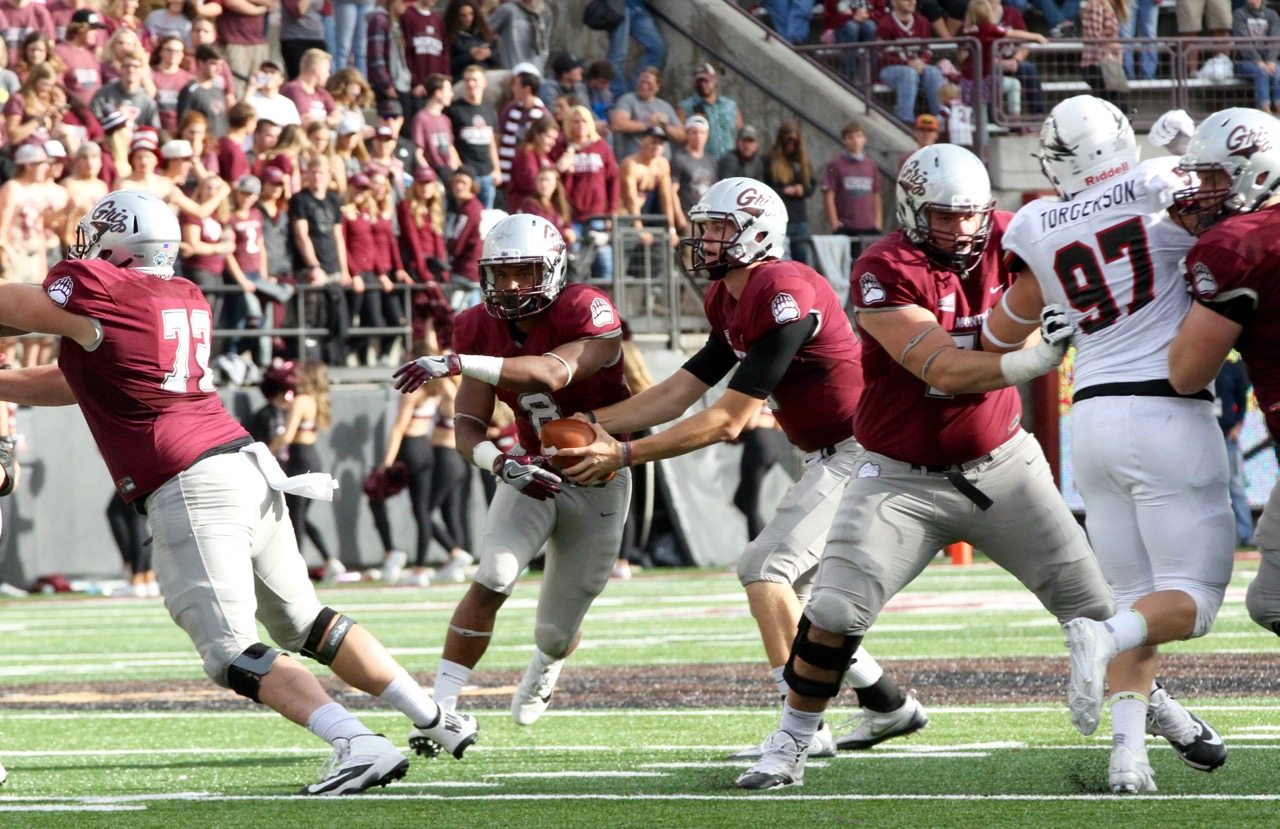When Bob Stitt came to Montana in the winter of 2014, he did so as a somewhat quixotic character. He was a Division II football coach with national notoriety — an oxymoron if there ever was one.
The fame that Stitt had come to experience within coaching circles derived from his growing reputation as an offensive innovator. He gave speeches at coaching clinics and offered advice on certain plays to make them more tenable. One of those innovations, the fly sweep, helped Stitt’s friend Dana Holgorson, the head coach at West Virginia, win the Mountaineers’ first Orange Bowl.
So when Stitt was hired that December 16th, the tales of the inventive coach swept through the Montana fan base. Three days later when he was introduced at a press conference, the local newspaper ran a story titled, “Stitt’s fly sweep produced big scores, new opportunities.” It detailed the play’s evolution and gave it credit for the offensive success Stitt brought to the Colorado School of Mines.
But where the story went wrong — and where everybody expecting to see the fly sweep dozens of times per game have gone wrong — is the fly sweep is not the gear that makes Stitt’s offense move. It is merely a play that has been run a handful of times in the coach’s 20 games with the Griz.
“The fly sweep was never anything more than you ran it once a game,” Stitt said Tuesday afternoon. “West Virginia ran it four times in one game and scored touchdowns and everybody thought the offense was based off that. It was just a play.”
While the fly sweep is just a play, it’s the motion coming from the player the ball would be tossed to that is one of the biggest drivers of the offense’s success. At least a couple dozen times a game the Z receiver in Montana’s offense starts in motion with a perfectly timed shift that has him cross in front of the quarterback just seconds after the snap. He’s on his way to the other side of the field.
“The motion is a big part of it,” quarterbacks and offensive quality control coach Andrew Selle said Wednesday. “As you can see we’ve done a handful of actually giving it to him. We’ve done a lot more where we don’t give it to him and he becomes an option in the pass route or off a run or whatever it might be.”
It’s a deceptive move designed to force the defense into making decisions and one of many play-action concepts built into the Grizzlies’ offense. Depending on how the defense reacts to the shifting receiver, something is designed to either open up in the run game, or the pass game — and it can be equally beneficial.
“There is only a handful of ways a team can try to defend that type of motion,” Selle said.
Added Stitt, “Some defenses it’s a little simpler for them because it doesn’t affect the box. Other teams it affects the linebackers. If teams are just going to rock safeties then it’s going to hurt them probably a little more on the perimeter. If they’re bumpin’ backers then it may hurt them in the box because you’re not box sound.”
Jeremy Calhoun’s 58-run on Montana’s second drive Saturday was direct evidence of the motion’s purpose. James Homan’s shift pulled Northern Arizona strong safety LeAndre Vaugh far enough out of position that Calhoun was able to sprint by him on his way to his longest run as a Grizzly.
“I really do get anxious because anytime they clean up the box it makes it an easier job for me and the O-linemen to make a play,” said Calhoun, who broke at least a 20-yard run for the fifth consecutive week.
During the second quarter against in Flagstaff, Homan came in motion from the strong side to the weak. Northern Arizona responded by blitzing from the motion side, which it routinely did, and bringing a safety down to thwart the possibility of a screen to Homan. The response opened up room for Justin Calhoun to run his route over the top and pick up 24 yards to help set up a field goal.
While those are anecdotal, recent results suggest the motion is producing the outcomes it is designed to: Since Big Sky Conference play began with Montana’s loss at Cal Poly, the Griz are averaging 5.3 yards per rush and are throwing for 394 yards per game.
“It’s very simple for us, but they have to have a plan and usually a couple plans against it,” Stitt said. “That’s the big thing.”











